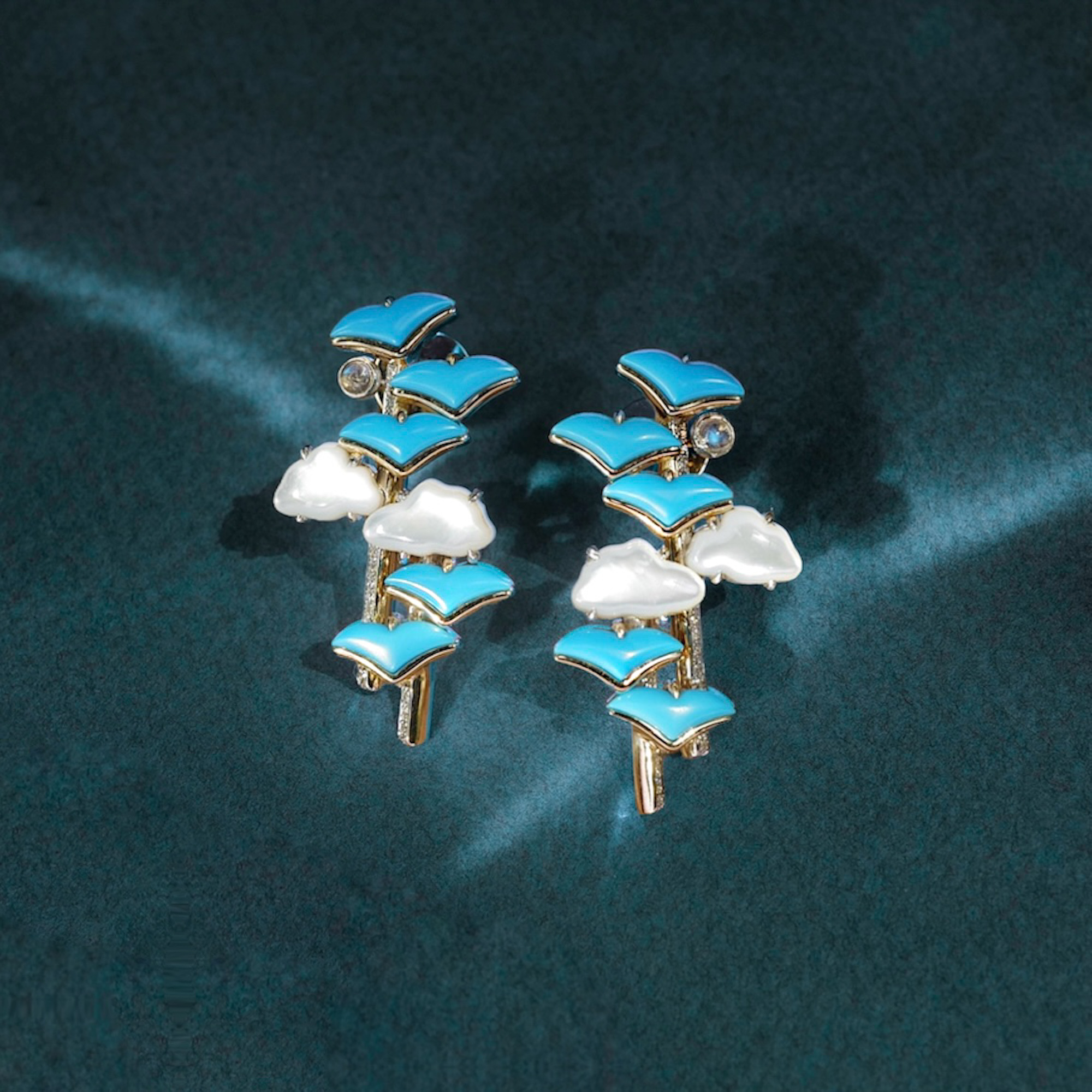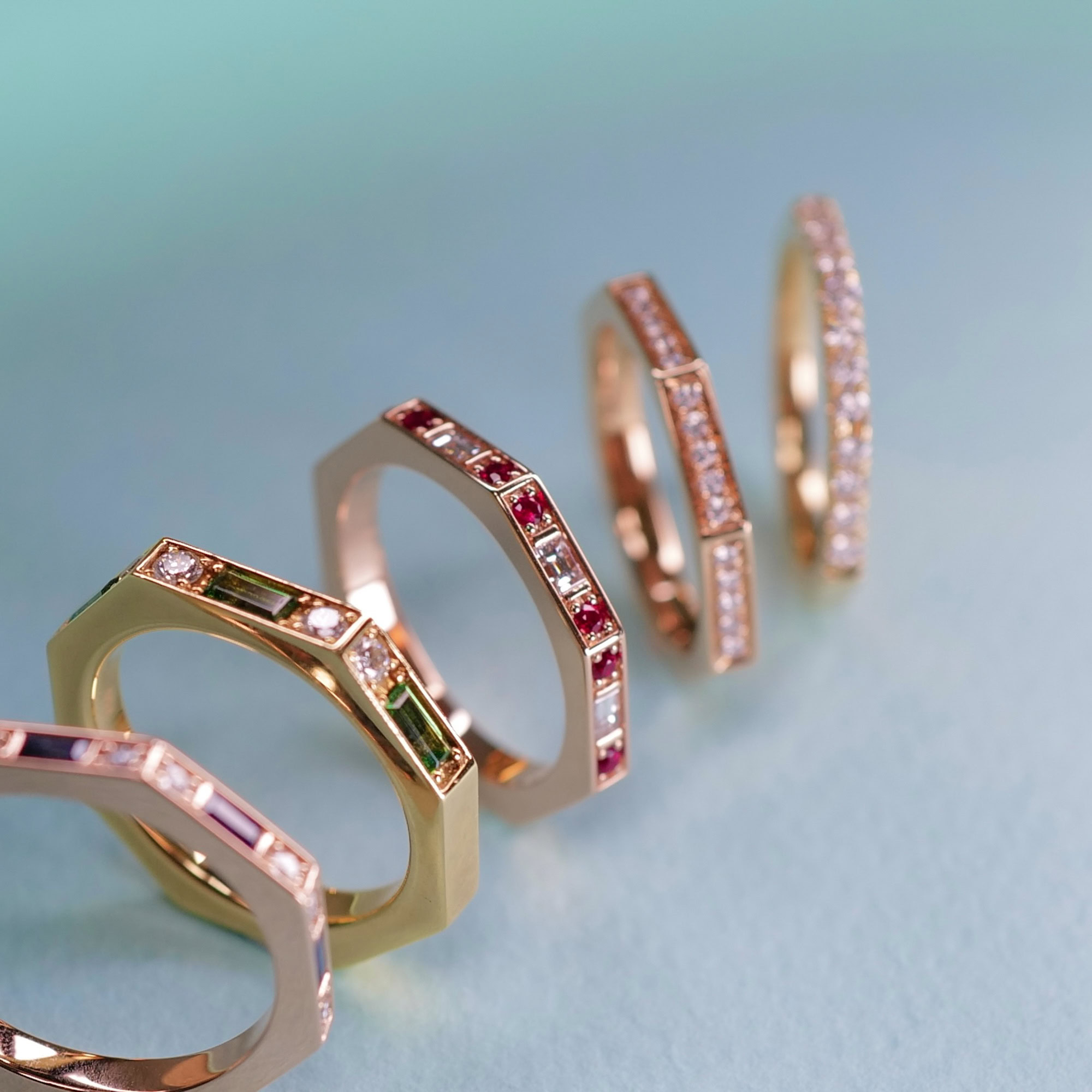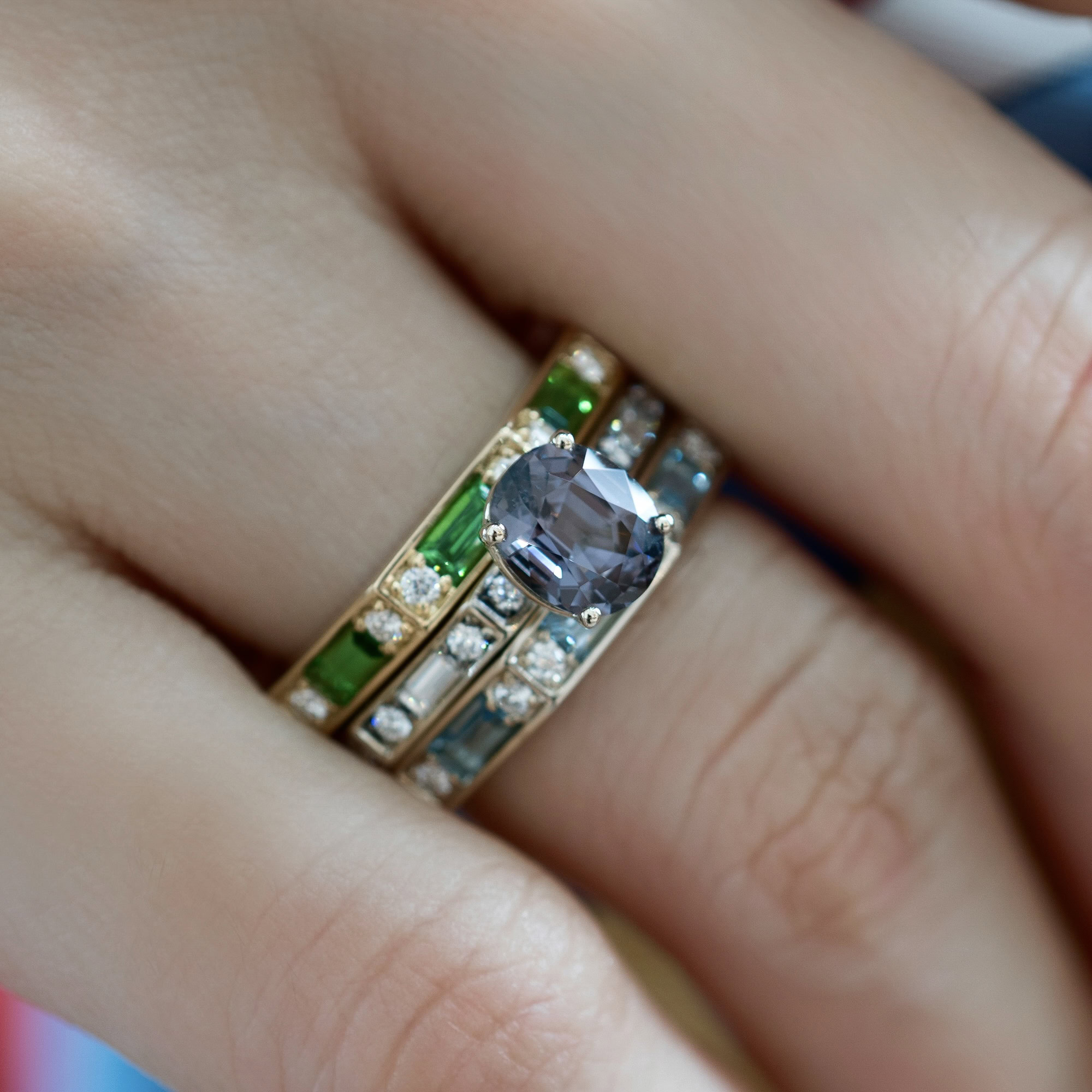Steeped in opulence and echoing tales from ancient epochs, Jade stands as a testament to humanity’s age-old fascination with beauty and luxury. From the hands of prehistoric artisans who sculpted this gem into both ornate adornments and formidable tools, to the myriad legends that envelop it, Jade remains unparalleled in its allure.
Dive into the mesmerising world of this precious stone with our exclusive guide:
What is Jade?
Contrary to popular belief, Jade isn’t actually a singular gemstone but a mineral. Intriguingly, it comprises two distinct components: jadeite and nephrite. Both are impressively hard and crystalline in their structure. Yet, when delved into their chemical compositions, they are markedly different.
Of the two minerals commonly labelled as jade, jadeite is the more elusive and robust variant.
What is Jadeite?
Jadeite belongs to the Pyroxene Group of inosilicates. While it can occasionally materialise as a lone mineral in a purely crystalline guise, this is a rare phenomenon. More often than not, Jadeite presents itself with a polycrystalline makeup.
Its genesis occurs under immense pressure within metamorphic rocks, rendering them a challenge to locate and, as a result, highly prized.

What Sets Jadeite Apart from Jade?
The distinction between Jadeite and Jade is perhaps one of the most perplexing aspects of this cherished gemstone. The terminology has, over time, amalgamated distinct minerals under a singular term, inevitably leading to some confusion.
As you’ve discerned, “Jadeite” isn’t synonymous with “Jade”. Instead, it’s one of the two minerals that constitute Jade, with “Nephrite” being its counterpart. While they do bear certain resemblances, their properties are largely unique.
Historically, various cultures have utilised both jadeite and nephrite for ceremonial objects and ornamental accessories for millennia.
Yet, intriguingly, there’s no historical evidence to suggest that any of these civilisations ever referred to these materials collectively as “jade” or perceived them as a singular entity. This poses the intriguing question: how did these two distinct minerals become intertwined in nomenclature?
Jadeite, in the realm of precious stones, is often regarded as the more esteemed variant between the two. Its scarcity and heightened demand elevate its value above nephrite. Although nephrite boasts durability, making it a popular choice for jewellery and intricate carvings, it’s the exceptional hues and the rarity of jadeite that command a premium price, rendering it more costly than its counterpart, nephrite.
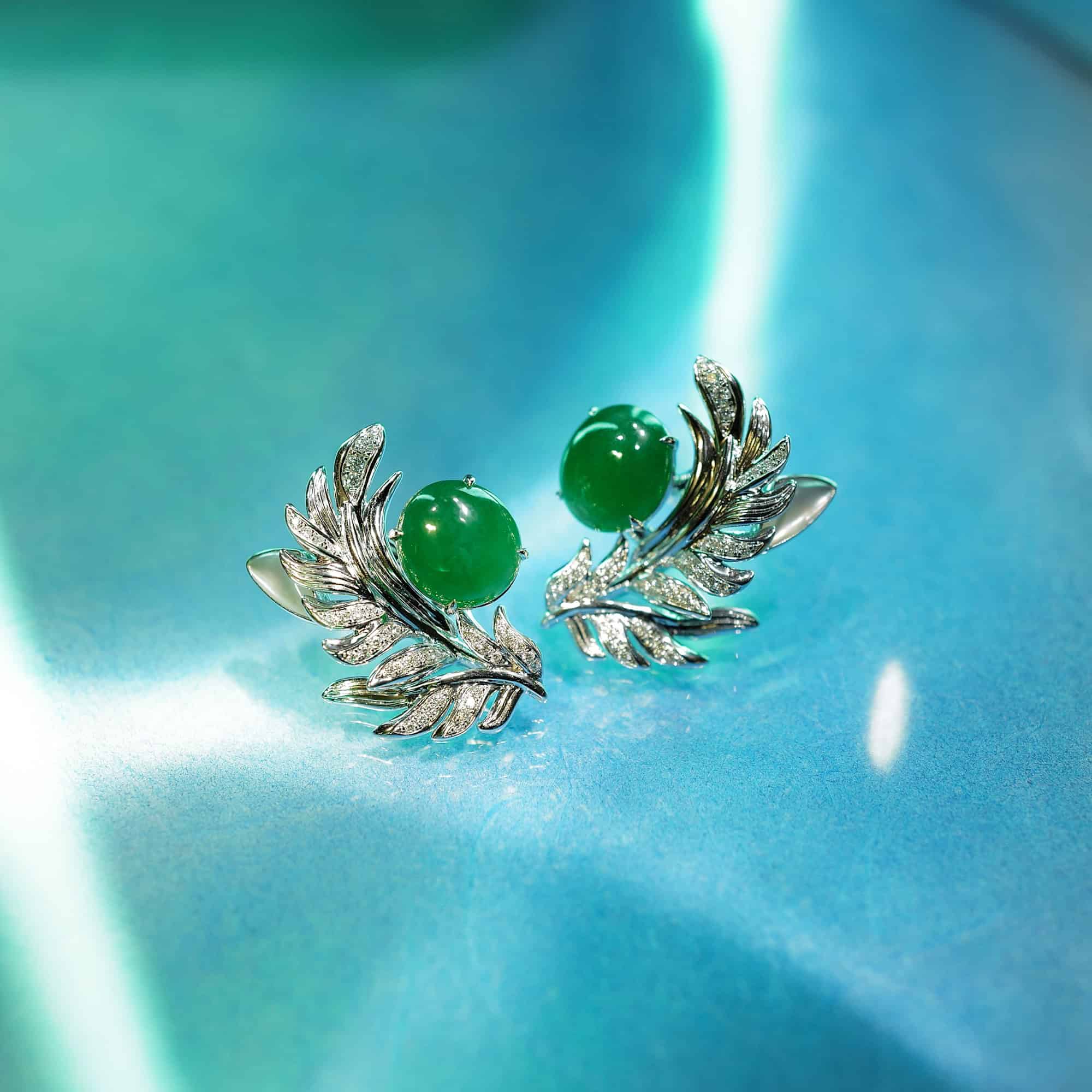
Tracing the Roots of the Name “Jade”
For countless generations, Chinese craftsmen have skilfully integrated nephrite into a myriad of practical artefacts. Much of the nation’s age-old legends, now intrinsically tied to jade, emerged from symbolic associations with nephrite. Fast forward to the 18th century, and a newfound gem from Burma began to captivate the Chinese populace with its enchanting green hues. This gem was none other than Jadeite.
It’s worth noting that during this period, these two materials were distinctly recognised. Nephrite was referred to as “Yu”, while Jadeite was known as “Fei-ts’ui”.
However, the narrative takes a twist when European traders, interacting with China, encountered these gems. Unacquainted with the rich heritage of these stones, and guided merely by their visual similarities, these merchants began collectively addressing both as “Jade” due to their limited understanding. Even when the distinct nature of the two became evident, the term had already gained traction and remained in use.
Today, the label “jade” remains prevalent in everyday vernacular and within the gemstone industry. However, it’s imperative for gemologists and aficionados to discern between nephrite and jadeite.
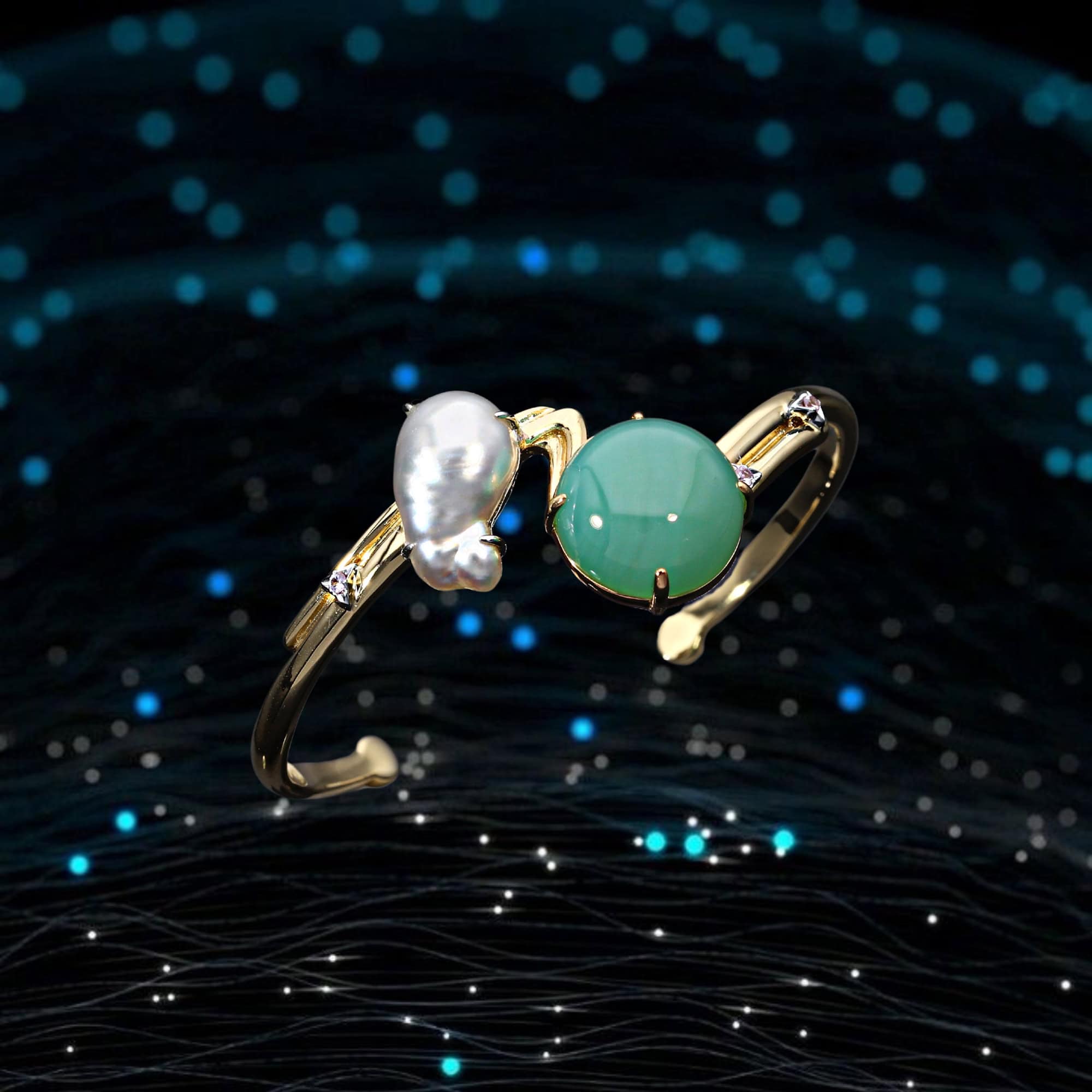
Is Jadeite Ideal for Jewellery?
Jadeite is renowned for its remarkable toughness. While its counterpart may exhibit a slightly higher resistance to breakage, Jadeite’s hardness is more than adequate to combat the primary nemesis of jewellery: household dust.
Its exceptional wearability makes it a prime choice for crafting into rings, thanks to its superior hardness. Yet, it’s equally splendid for necklaces, bracelets, and earrings.
In terms of complementary metals, Jadeite can be paired with a vast array. However, at Calla Lily, our commitment to luxury ensures that we exclusively employ metals of the finest calibre, such as 18k yellow, white, and rose gold, platinum, or titanium.
Jadeite’s Kaleidoscope of Colours
When one mentions Jadeite or Nephrite, the immediate imagery that often springs to mind is that of a luminous green gemstone.
Indeed, this vibrant green is the most prevalent hue and remains a perennial favourite. The exquisite “Imperial Jade”, characterised by its fine texture and rich green shade sourced from Myanmar, stands as the pinnacle of jadeite’s value. The spectrum of green in jadeite, however, spans a vast range, from subtle to deeply saturated tones.
Yet, the colour palette of jadeite extends beyond just green. It encompasses purples, from delicate lavender to the deeper shades of plum and mauve. Of these, the lavender jadeites hold a special place, being second only to the coveted green in terms of value.
A lesser-known and infrequently used in jewellery is the “chloromelanite”. This variant of jadeite, with its opaque and dark grey to black hue, crafts into truly distinctive and captivating pieces.
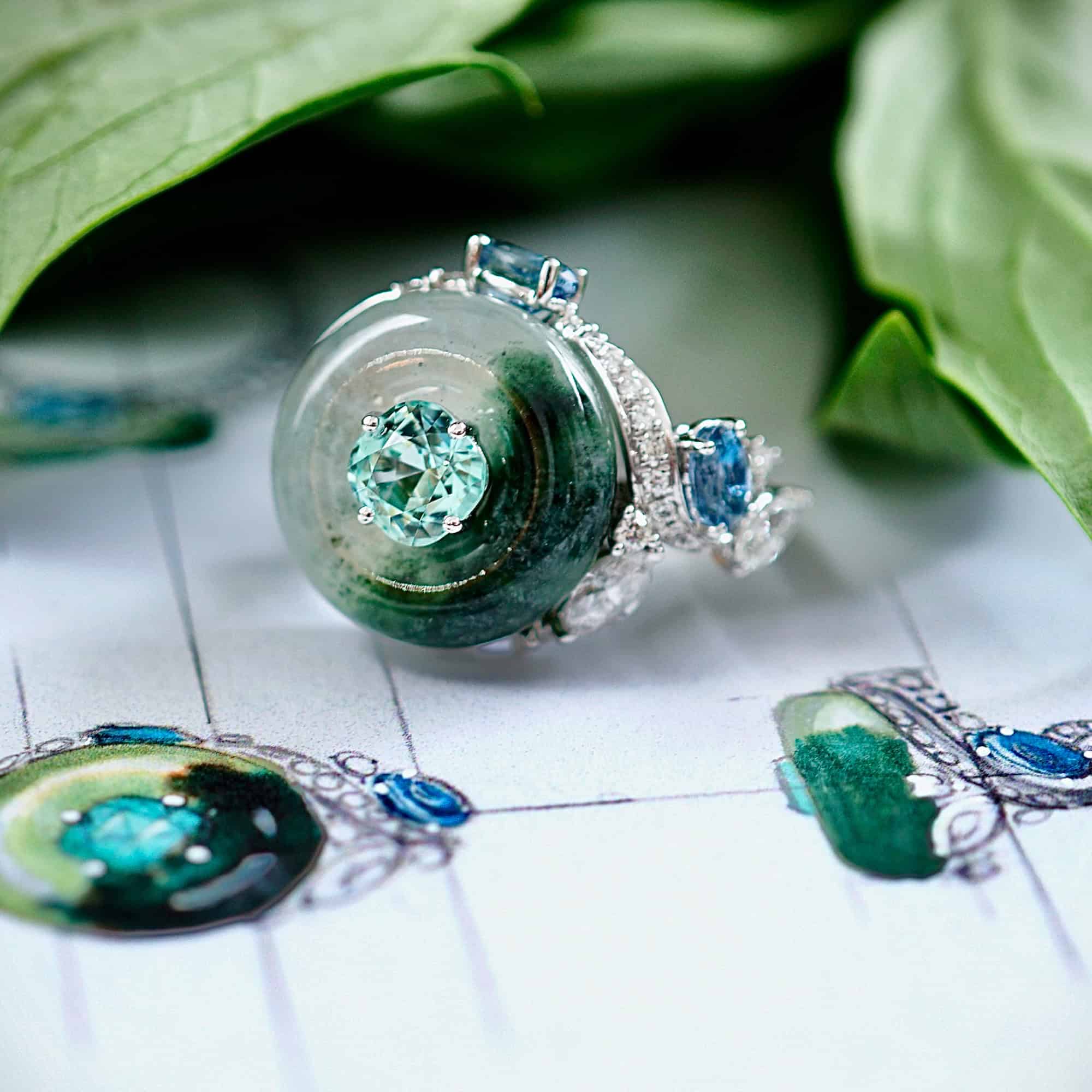
Within the hallowed halls of fine jewellery craftsmanship, green Jadeite stands as a preferred choice for intricate carvings.
Masterful Designs and Distinctive Cuts
Jade, a term that elegantly encompasses both jadeite and nephrite, is more often showcased in its polished grandeur than its faceted brilliance. Owing to its naturally velvety and consistent texture, Jade is frequently fashioned into cabochons and beads, capturing its inherent beauty. This unique texture also lends itself to exquisite carvings, allowing artisans to mould it into a myriad of shapes and figures. The value of such pieces isn’t merely determined by weight or carat but by the mastery of craftsmanship and the historical significance of the design. Jadeite, in its refined splendour, is a gemstone that demands a discerning eye for proper appraisal, a testament to its specialised allure.
The Distinctive Properties of Jade
Jade, a gemstone revered for its beauty and significance, possesses unique physical properties that further elevate its allure.
On the Mohs scale, which measures the hardness of minerals, jadeite impressively ranks between 6.5 and 7, while nephrite follows closely, ranging from 6 to 6.5. This means jadeite, in particular, boasts a commendable resistance to scratching.
Delving deeper into the characteristics of jadeite, it has a refractive index of 1.66-1.67. This is notably higher than many other minerals, lending it a captivating brilliance.
One of the mesmerising traits of jadeite is its strong pleochroism. This means that the gem can display different colours when observed from varying angles, adding to its mystique.
Additionally, certain varieties of jade possess the enchanting ability to fluoresce under ultraviolet light, casting a glow that further accentuates its luxurious appeal.
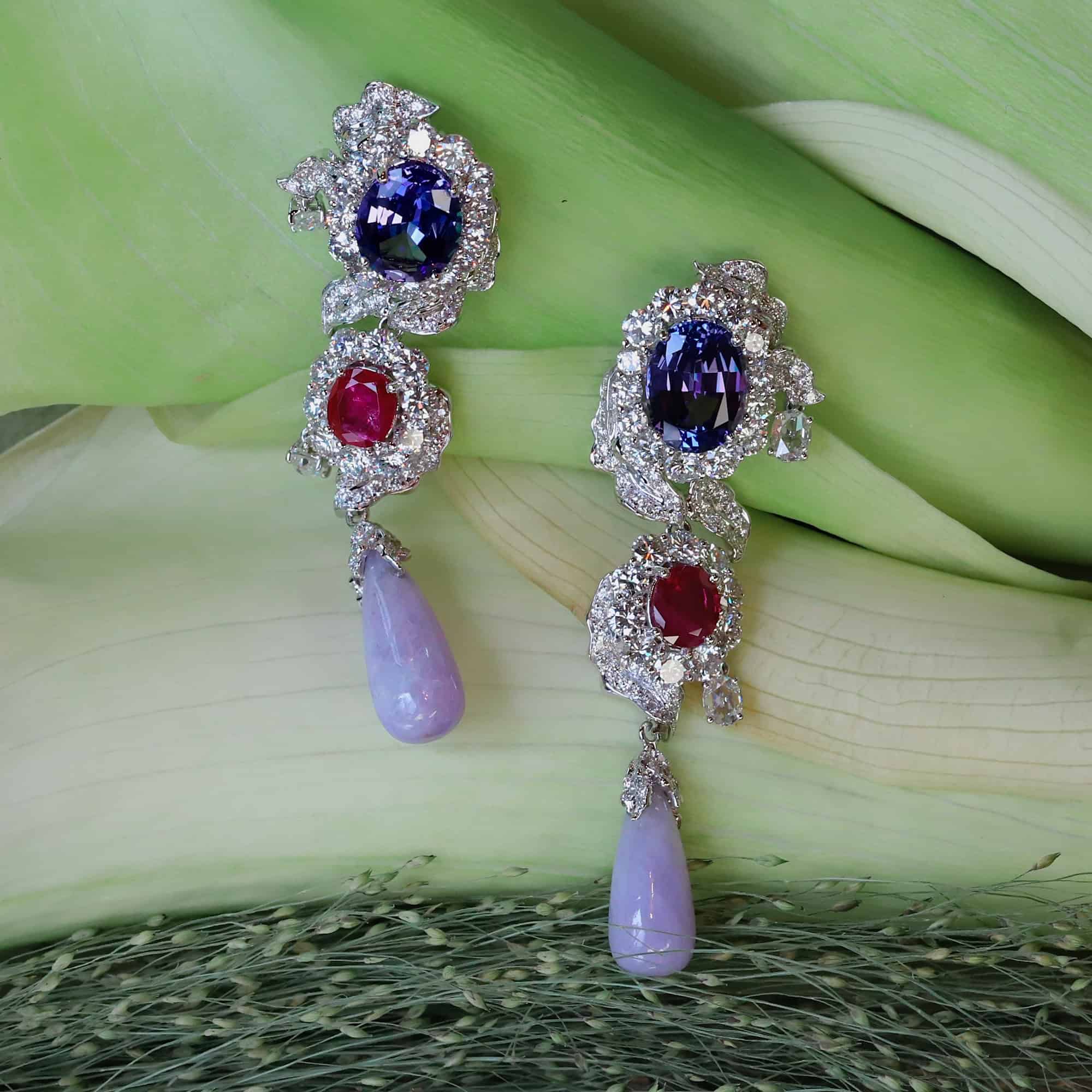
The Timeless Allure of Jade: A Journey Through History
Jade, with its mesmerising beauty and profound significance, has been cherished since the annals of ancient history. The bond between this gemstone and humanity has been unwavering, transcending time and civilisations.
Archaeological discoveries from prehistoric sites have unveiled jadeite and nephrite artefacts that range from rudimentary tools and weapons to astonishingly intricate carvings, decorations, and jewellery. Such sophisticated designs from epochs long past hint at the profound reverence and significance these stones held.
In the heart of Central America, the Mayans and Aztecs held jadeite in high esteem, utilising it for both medicinal and ornamental purposes.
While many were captivated by jade’s enduring beauty and resilience, its historical narrative is incomplete without acknowledging its profound connection with China. The two have been inextricably linked since antiquity.
Intriguingly, in Chinese script, the character symbolising “emperor” bears a striking resemblance to that for “jade”. While Western civilisations held rubies, sapphires, and diamonds in high regard, especially amongst royalty, in China, jade reigned supreme. It was heralded not only as the pinnacle of natural beauty but also as an emblem of moral virtue.
During the Han Dynasty, around 120 CE, the Shuowen Jiezi, an esteemed Chinese dictionary penned by Xu Shen, eloquently described the stone’s five virtues: “Benevolence for its radiant lustre. Honesty for its clear translucence. Wisdom for its serene and profound tone. Integrity and Bravery, for while it can be shattered, it remains unwavering.”
To say that jade is merely admired in Chinese culture would be an understatement. Its legacy is deeply entrenched, and it continues to be a gemstone of unparalleled significance in the annals of the Empire.
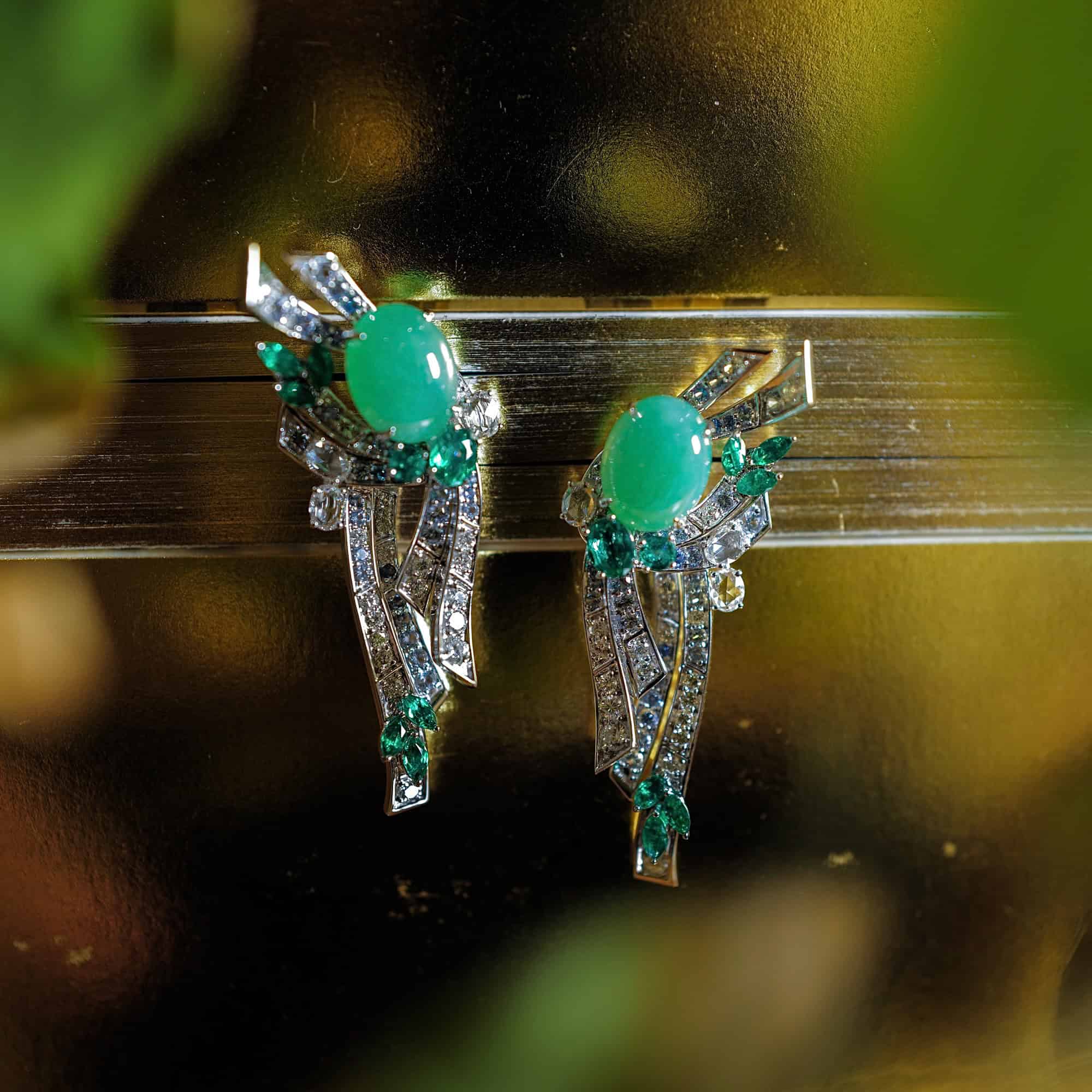
Deciphering the Value of Jade: An Art Beyond Mere Appraisal
Having delved into jade’s profound significance within Chinese society, it becomes evident that determining its value is not a mere matter of metrics but a nuanced understanding of its cultural resonance.
Jade’s valuation in Chinese culture transcends the tangible. While the stone is deeply embedded in their cultural tapestry, its appraisal is a unique affair. To truly grasp jade’s worth, one must venture beyond conventional benchmarks.
Of course, jadeite’s market value is influenced by familiar factors: colour, transparency, origin, size, and texture. Yet, for Chinese connoisseurs, the spiritual significance and the historical context of its ownership and transmission are equally paramount.
However, when we turn our attention to universally recognised criteria, colour emerges as the most influential determinant. The verdant shades of jade are particularly coveted. Premium jadeite, with its vibrant hue and desired transparency, is becoming increasingly scarce, thereby fetching premium prices.
To assess colour, it’s standard practice to examine the gem under both fluorescent and incandescent lighting, ensuring uniformity.
A jade’s finish, with its pristine polish and unblemished surface reflections, is paramount. Clarity is crucial, as visible fractures can diminish its value. The stone’s toughness and translucence influence its shape and functionality. Its hardness, a defining trait, dictates how it’s refined – typically ground and polished rather than cut.
Both jadeite and nephrite undergo grading based on their treatments. “Type A” represents the untouched, natural variants, which might bear a mere wax coating. These are the specimens we ardently champion, as additional enhancements can compromise the gemstone’s integrity, consequently diminishing its worth.
Conventionally, jade’s dimensions are expressed in millimetres, with the price of cabochons escalating in tandem with size. For a premium piece like an Imperial Jadeite, even slight variations in size can lead to significant price fluctuations. This pricing sensitivity, interestingly, isn’t as pronounced for nephrite.
Understanding Jade Classifications and Their Impact on Value
Type A Jade is the most natural form of this gemstone. It undergoes no artificial treatments, with the exception of a wax coating to enhance its surface. This preservation of its natural state, including its colour and internal structure, makes Type A Jade highly sought after and typically the most valuable among the three types.
Type B Jade undergoes a treatment process where it is exposed to acid to remove impurities. Following this, it is filled with a polymer resin to improve its appearance and translucency. While this treatment can enhance its visual appeal, it can also reduce the stone’s durability and longevity, potentially affecting its value over time.
Type C Jade is treated with dyes to modify or enhance its colour. This treatment can make the jade visually striking, but the dyes are prone to fading when exposed to light and certain chemicals. Due to this susceptibility and the significant alteration from its natural state, Type C Jade is generally less valued compared to Type A and B.
The Global Tapestry of Jade
At Calla Lily Fine Jewellers, we traverse the globe to source the most exquisite jade, ensuring our clientele experience the pinnacle of luxury. Our journey takes us to the verdant landscapes of Guatemala, the vast expanses of Russia, the sun-kissed valleys of California, the romantic terrains of France, and the rugged beauty of Kazakhstan. Yet, it’s the treasures of Myanmar that truly captivate, being the cradle of the illustrious “Imperial Jade”.
In the heart of China, nephrite, especially the ethereal white variety, reigns supreme, cherished for its deep spiritual resonance. The verdant hues of green nephrite are equally adored, though their local abundance wanes with each passing day.
The Timeless Elegance of Jade
Throughout history, jade has been more than just a gemstone; it has been a symbol of protection and reverence. Esteemed as the pinnacle of talismans, jade has adorned ceremonial masks and a plethora of sacred artefacts, reflecting its deep-rooted significance.
Beyond its tangible allure, jade is believed to be a conduit of spiritual healing. Many connoisseurs and enthusiasts associate it with attributes of mental clarity, wisdom, and intuition. The ethereal shades of purple and lavender jade, in particular, are thought to evoke feelings of pure joy, offering a touch of resilience and light-heartedness amidst life’s challenges.
Tracing its origins, jade’s enchantment is deeply rooted in ancient Asian civilisations. Yet, its charm is timeless, captivating both Eastern and Western cultures with its rarity, resilience, and radiant beauty.
At Calla Lily Fine Jewellers, we believe in reimagining traditions. When jade is intricately crafted into contemporary designs, especially when paired with vibrant gemstones and sparkling diamonds, it exudes an unparalleled sophistication, bridging the past’s elegance with today’s modernity.

